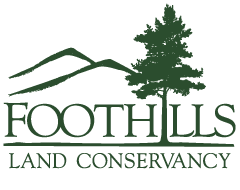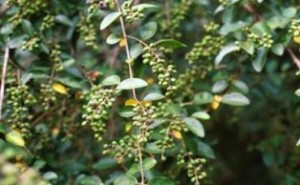Tips on taming our region’s non-native vegetation…
by Kristine Johnson, Supervisory Forester – GSMNP
Invasive exotic plants are among the most serious threats to natural areas and biodiversity worldwide. Foothills Land Conservancy supporters and neighbors find additional cause for concern as exotic plant invasions reduce real estate values, facilitate erosion, alter fire regimes, obscure planned landscapes and change wildlife habitat. Late summer and early autumn provide opportunities to survey and control many species of exotic plants, since seed production can often be prevented and some species are more visible as foliage changes colors. Oriental bittersweet, for example, produces bright orange fruits and yellow leaves while some evergreens such as privet and Japanese honeysuckle show up in contrast to brighter fall colors. Because plants translocate photosynthetic products down to roots for storage in the fall, herbicides also travel more efficiently to root systems when applied late in the growing season either as a foliar application or by cutting and stump treating. Proper plant identification and careful surveys to assess control strategy are important first steps in managing exotic plant infestations.
Preventing exotic plants from becoming established is particularly challenging when neighboring lands supply a continuous seed source. While most invasive exotic plant species thrive in disturbed areas such as roadsides and stream corridors, some can also invade intact plant communities and shaded sites. The Tennessee Exotic Pest Plant Council provides information on native plant alternatives for landscaping and erosion control as well as a prioritized list of invasive plant species to avoid planting. Many weed seeds and viable plant fragments can be transported in straw, wood chip mulch, topsoil and fill, and gravel or sand from quarries. Sources of such materials should be investigated carefully and development sites monitored for new infestations. Coltsfoot, garlic mustard, microstegium and Johnson grass are good examples: fields consisting almost entirely of Johnson grass in seed are often harvested for hay, and fragments of coltsfoot a few inches long can become new, flowering plants growing out of gravel in three weeks. Seeds can also travel in soil carried along by muddy boots and vehicle tires.
Educating neighbors and working cooperatively to manage infestations helps achieve success as well as building a sense of community and stewardship. Information on plant identification and exotic plant management can be found at websites for the Tennessee Exotic Pest Plant Council (www.tneppc.org) and University of Tennessee Herbarium http://tenn.bio.utk.edu.

